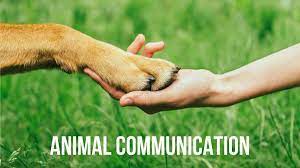Animals and humans both communicate, or express their
ideas, in a number of forms. Unlike humans, however, animals do not use
language in its truest sense because they do not communicate in complex,
structured, and grammatical sentences. different from the linguistic point of
view, animals do have language from a linguistic point of view. Animal
communication systems include the use of body language, vocalizations, and
chemical signals, and can be studied using linguistics. One of the reasons why
animals have language is because they use communication systems to convey
information and meaning.
Can animals speak their language?
Since normativity is essential to our language,
animals don’t have a language in the sense we do. Animals produce sounds thar
express their emotions, and sone can use signs in a pavlovian way, as a result
of an association between previous uses and succeeding events.
Animal Communication System: True Language?
A basic question pondered at some time or other by all
human language users is whether any other species also has a real language.
Certainly other species have forms of communication, but "communication”
is not synonymous with “language”. No known animal uses a language in the wild,
but animals do communicate with each other is system called codes. A true
language differs from a signal code in terms of several essential ffeatures
communication systems,both human and animal communications
have some features:
1. A Mode of Communication: The mode of communication
may be vocal-auditory as in human and most animal systems, or visual as in sign
language and many other animal systems (e.g. bees), or tactile, or even
chemical (e.g. moths).
2. Semanticity: The signals in any communication
system have meaning. Without this feature, the system would consist merely of
noise (in the technical sense of a meaningless jumble).
3. Pragmatic Function: All systems of communication
serve some useful purpose(s), from helping the species to stay alive to
influencing others’ behavior in some way (as in TV commercials).
Signal Codes Vs Language*
Some of the signal codes used by animals may exhibit
one or more of the features describe above, but only to a limited degree. For
example, the dance of the honeybees has limited displacement—it communicates
information about the location of a distant food source seen in the recent
past—and parts of the dance are arbitrary, though others are representational.
The bee’s system is not completely productive since they cannot. For example,
convey information about vertical distance or direction. Most signal codes
consist of a small, finite number of discrete signals, often concerned with
essentials of survival such as food, danger, or reproduction. These systems lack
a mechanism for introducing new signals: they are closed communication systems.
Thus when the animal is confronted with a novel situation, it has no way to
communicate about situation (an obvious disadvantage for the best chances of
survival). Language, in contrast, must have all of the language features to be
considered language. Without one or more, it would simply
be a signal code.
Written by:
Salwa Fahira, St. Nurauliya Fahmi, Fadillah
Mutmainnah, Masruddin
(PBI A-2023)


